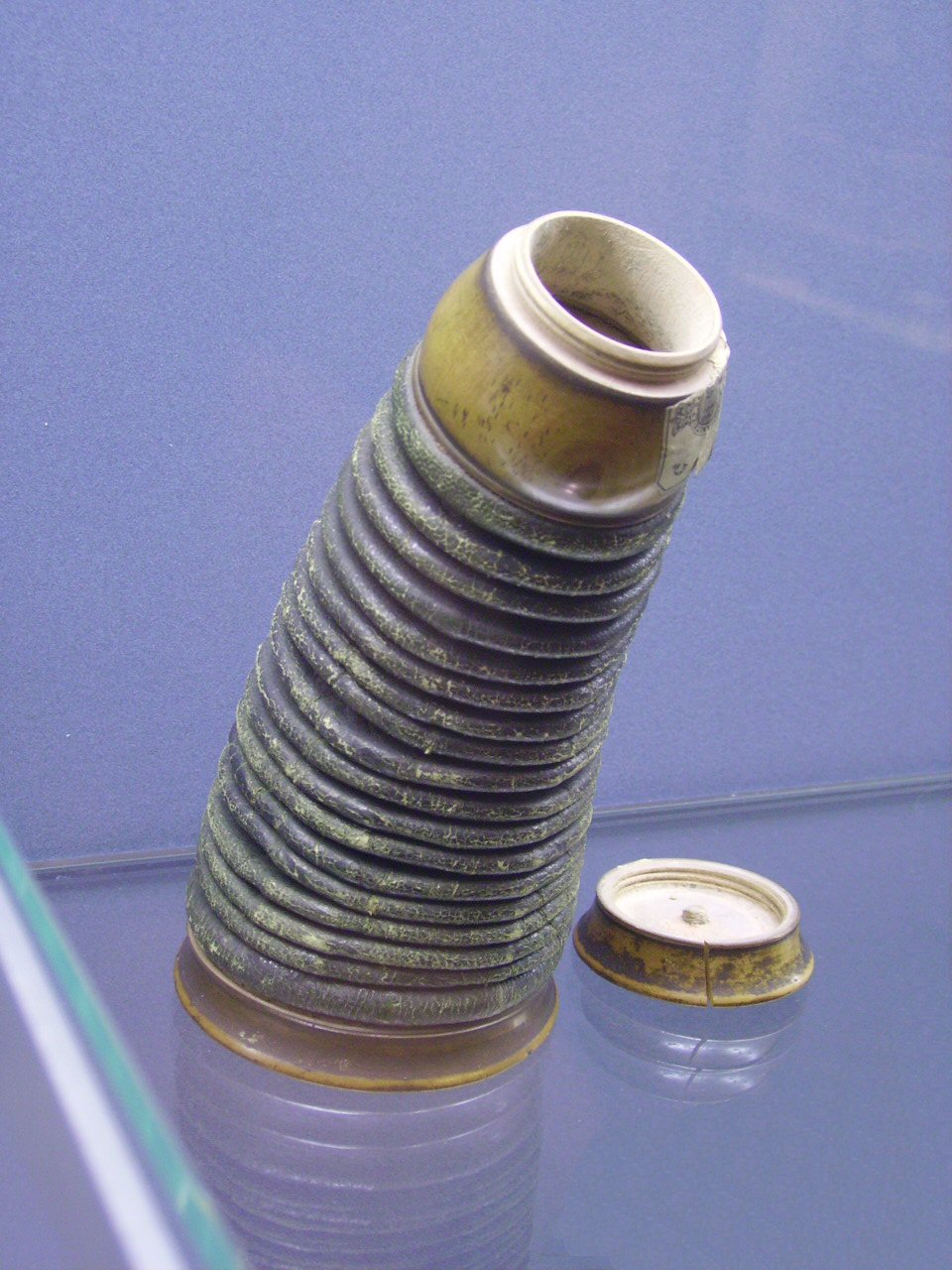Pounce (calligraphy) on:
[Wikipedia]
[Google]
[Amazon]
 Pounce or sand is a fine powder, most often made from powdered cuttlefish bone or sandarac resin, that was used both to dry ink and to sprinkle on a rough writing surface to make it smooth enough for writing. This was especially needed if the paper came " unsized", that is, lacking the thin gelatinous material used to fill the surface of the paper and make it smooth enough for writing with a
Pounce or sand is a fine powder, most often made from powdered cuttlefish bone or sandarac resin, that was used both to dry ink and to sprinkle on a rough writing surface to make it smooth enough for writing. This was especially needed if the paper came " unsized", that is, lacking the thin gelatinous material used to fill the surface of the paper and make it smooth enough for writing with a
quill
A quill is a writing tool made from a moulted flight feather (preferably a primary wing-feather) of a large bird. Quills were used for writing with ink before the invention of the dip pen, the metal- nibbed pen, the fountain pen, and, eventual ...
or a steel nib. It was also used to prepare the surface when drafting with Rapidograph pens on mylar
BoPET (biaxially-oriented polyethylene terephthalate) is a polyester film made from stretched polyethylene terephthalate (PET) and is used for its high tensile strength, chemical and dimensional stability, transparency, reflectivity, gas and a ...
, a common drafting medium in the late twentieth century.
History
In the 19th century the pounce pots or sanders often had a shallow dish round the top so that pounce or sand could be returned to the pot and reused. The process is very effective for quickly drying ink, and althoughblotting paper
Blotting paper, called bibulous paper, is a highly absorbent type of paper or other material. It is used to absorb an excess of liquid substances (such as ink or oil) from the surface of writing paper or objects. Blotting paper referred to as ...
has been available since the Tudor period
The Tudor period occurred between 1485 and 1603 in England and Wales and includes the Elizabethan period during the reign of Elizabeth I until 1603. The Tudor period coincides with the dynasty of the House of Tudor in England that began wit ...
, pounce or sand continued to be used throughout the nineteenth century because it was often cheaper.
Application
Handwriting and calligraphy
Pounce is gently sprinkled all over the writing on the paper. When using a quill or a steel nib, and with inks that are made up to match those typically in use during the 18th and 19th centuries, and provided the pen has been used with the fine strokes typical of handwriting of that period, the handwriting will be sufficiently dry within 10 seconds to allow the paper to be folded without blotting. Gently vibrating the paper whilst the pounce or sand is on it ensures that little or no pounce or sand sticks to the handwriting and excess sand or pounce is shaken off before folding the paper.Art and embroidery
"Pricking and pouncing" is a transfer technique that uses a stencil with fine holes, often made by pricking a template using apounce wheel
A tracing wheel, also known as a pattern wheel, pounce wheel, and dart wheel, is an instrument with multiple teeth on a wheel attached to a handle. The teeth can be either serrated or smooth. It is used to transfer markings from sewing patter ...
, to which a fine powder that contrasts with the fabric the pounce is dusted over, giving a temporary pattern through use of the stencil. Chambray
Chambray () is a commune in the Eure department of northern France, 13 km northeast of Évreux on the north bank of the river Eure.
The Château de Chambray, in the north of the commune, is the ancestral home of the Marquis de Venevelles ...
would use charcoal on the light side, and chalk on the dark side of the fabric.
See also
*History of tattooing
Tattooing has been practiced across the globe since at least Neolithic times, as evidenced by mummified preserved skin, ancient art and the archaeological record. Both ancient art and archaeological finds of possible tattoo tools suggest tattooin ...
Notes
References
{{Sister bar, auto=yes, wikt=pounce Calligraphy Embroidery Powders